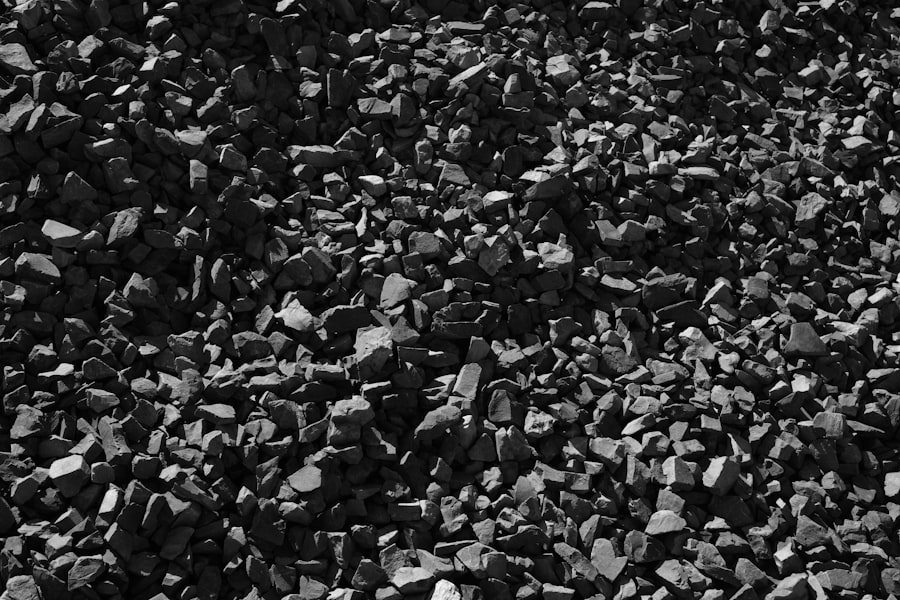The Stonewall Jackson Valley Campaign of 1862 stands as a remarkable episode in the annals of the American Civil War, showcasing the tactical brilliance of Confederate General Thomas J. “Stonewall” Jackson. This campaign, which unfolded in the picturesque yet rugged Shenandoah Valley of Virginia, was not merely a series of battles; it was a masterclass in maneuver warfare.
Jackson’s ability to outsmart and outmaneuver his Union adversaries, despite being significantly outnumbered, has earned him a place in military history as one of the war’s most effective commanders. The campaign began in the spring of 1862, a time when the Confederacy was in dire need of victories to bolster morale and support for its cause. Jackson’s mission was to prevent Union forces from threatening the vital Confederate stronghold of Richmond while simultaneously disrupting Union operations in the Valley.
His audacious maneuvers and rapid movements through the terrain not only caught his enemies off guard but also demonstrated the importance of speed and surprise in military strategy. The campaign would ultimately solidify Jackson’s reputation as a formidable leader and a key figure in the Confederate war effort.
Key Takeaways
- The Stonewall Jackson Valley Campaign was a series of battles fought in the Shenandoah Valley during the American Civil War.
- The challenging terrain of the Shenandoah Valley presented obstacles for both Union and Confederate forces, impacting strategy and tactics.
- Stonewall Jackson’s strategic objectives included disrupting Union supply lines, diverting Union forces, and preventing them from reinforcing General McClellan’s army.
- The Battle of McDowell was a key engagement in the campaign, where Jackson’s forces successfully repelled a Union attack.
- The Battle of Front Royal, Battle of Winchester, Battle of Cross Keys, and Battle of Port Republic were all significant clashes in the campaign, with varying outcomes for both sides.
The Challenging Terrain of the Shenandoah Valley
The Shenandoah Valley, often referred to as the “Breadbasket of the Confederacy,” presented both opportunities and challenges for military operations. Its lush landscapes, fertile fields, and winding rivers provided essential resources for both armies, but the geography also posed significant obstacles. The valley is flanked by the Blue Ridge Mountains to the east and the Allegheny Mountains to the west, creating a natural corridor that could be easily defended or exploited depending on the strategic acumen of the commanders involved.
Jackson’s forces had to navigate through this complex terrain, which included narrow passes, dense forests, and unpredictable weather conditions. The valley’s topography not only influenced troop movements but also affected supply lines and communication between units. Jackson’s understanding of the land allowed him to leverage its features to his advantage, using the mountains and rivers to conceal his movements and surprise his opponents.
This intimate knowledge of the terrain was crucial in executing his plans and maintaining the initiative throughout the campaign.
Stonewall Jackson’s Strategic Objectives

Jackson’s strategic objectives during the Valley Campaign were multifaceted. Primarily, he aimed to protect Richmond from Union advances while simultaneously disrupting Union supply lines and communications in the Valley. By engaging Union forces in a series of battles, he sought to draw attention away from the Confederate capital and create a diversion that would benefit General Robert E.
Lee’s larger strategy in Virginia. Moreover, Jackson aimed to demonstrate the effectiveness of rapid movement and decisive engagement. He believed that by striking quickly and decisively, he could instill fear in his opponents and disrupt their plans.
His strategy relied heavily on speed, surprise, and the ability to concentrate his forces at critical moments. This approach not only aimed to achieve immediate tactical victories but also sought to boost Confederate morale and rally support for their cause among the Southern populace.
The Battle of McDowell
| Metrics | Data |
|---|---|
| Date | May 8, 1862 |
| Location | Highland County, Virginia |
| Result | Confederate victory |
| Commanders | Union: Robert H. Milroy Confederate: Thomas J. “Stonewall” Jackson |
| Casualties | Union: 256 killed, 1,000 wounded Confederate: 498 killed, 1,700 wounded |
The Battle of McDowell, fought on May 8, 1862, marked one of the early confrontations in Jackson’s Valley Campaign. As Union forces under General Robert H. Milroy occupied a strong defensive position at McDowell, Jackson recognized that a direct assault would be costly.
Instead, he opted for a flanking maneuver that would allow him to strike at Milroy’s forces from an unexpected angle. Jackson’s troops executed this plan with precision, moving through difficult terrain to position themselves for an attack. The battle itself was characterized by fierce fighting, with both sides suffering casualties.
However, Jackson’s ability to outmaneuver Milroy ultimately led to a Confederate victory. This engagement not only bolstered Jackson’s reputation but also set the tone for his campaign—emphasizing mobility and tactical ingenuity over sheer numbers.
The Battle of Front Royal
Following his success at McDowell, Jackson turned his attention to Front Royal, where Union forces were stationed under General John Fremont. The Battle of Front Royal on May 23, 1862, showcased Jackson’s ability to exploit opportunities as they arose. With a swift march, he aimed to catch Fremont’s troops off guard and disrupt their plans.
The battle unfolded rapidly as Jackson’s forces launched a surprise attack on the Union garrison at Front Royal. The Confederates overwhelmed their opponents with a combination of speed and ferocity, leading to a decisive victory that resulted in significant Union casualties and captures. This engagement further demonstrated Jackson’s tactical prowess and solidified his reputation as a commander who could achieve remarkable results against larger forces.
The Battle of Winchester

The Battle of Winchester on May 25-26, 1862, represented another critical moment in Jackson’s campaign. After his victories at McDowell and Front Royal, he sought to engage Union forces under General Nathaniel P. Banks in Winchester. This battle was significant not only for its immediate tactical implications but also for its strategic importance in controlling the Valley.
The battle itself was marked by intense fighting as both sides vied for control of key positions. Ultimately, Jackson’s ability to coordinate his troops effectively led to another Confederate victory, forcing Banks to retreat and further solidifying Jackson’s dominance in the Valley.
The Battle of Cross Keys
The Battle of Cross Keys on June 8, 1862, was another testament to Jackson’s strategic acumen during his Valley Campaign. Following his successes at Winchester, he faced Union forces under General John Frémont once again. This engagement highlighted Jackson’s ability to adapt his tactics based on the evolving battlefield conditions.
As Frémont attempted to regroup his forces after previous defeats, Jackson seized the opportunity to launch an offensive at Cross Keys. The battle unfolded with fierce fighting as both sides engaged in a struggle for control over key terrain features. Despite facing challenges from Frémont’s well-positioned troops, Jackson’s forces managed to secure victory through coordinated assaults and effective use of artillery.
The Battle of Port Republic
The culmination of Jackson’s Valley Campaign came with the Battle of Port Republic on June 9, 1862. This battle was pivotal not only for its immediate outcomes but also for its broader implications for the Confederate war effort. After defeating Frémont at Cross Keys, Jackson turned his attention to another Union force under General James Shields at Port Republic.
The battle was characterized by intense combat as Jackson sought to exploit his previous victories and maintain momentum in the Valley. His forces engaged Shields’ troops with determination, employing tactics that emphasized speed and surprise once again. The outcome was another Confederate victory that effectively ended organized Union resistance in the Valley for the time being.
Impact of the Campaign on the Civil War
The impact of Stonewall Jackson’s Valley Campaign reverberated throughout the Civil War landscape.
By demonstrating that a smaller force could achieve significant results through superior tactics and mobility, Jackson inspired confidence among Confederate leaders and soldiers alike.
Moreover, the campaign had lasting implications for Union strategy in Virginia. The losses suffered by Union forces prompted a reevaluation of their approach in the region and underscored the need for more effective coordination among their commanders. Jackson’s successes served as a reminder of the importance of adaptability and decisive action in warfare.
Legacy of Stonewall Jackson Valley Campaign
The legacy of Stonewall Jackson’s Valley Campaign endures as a testament to his military genius and leadership qualities. His ability to achieve remarkable victories against larger forces has been studied by military strategists and historians alike for generations. The campaign exemplified principles such as rapid movement, surprise attacks, and effective use of terrain—lessons that continue to resonate in modern military thought.
Furthermore, Jackson’s reputation as a fearless leader who inspired loyalty among his troops contributed significantly to his enduring legacy within Confederate history. His actions during this campaign solidified his status as one of the most celebrated figures in American military history, leaving an indelible mark on both Confederate and Union narratives surrounding the Civil War.
Navigating Challenging Terrain: Lessons Learned from Stonewall Jackson’s Campaign
Stonewall Jackson’s Valley Campaign offers valuable lessons for contemporary military leaders navigating challenging terrain. One key takeaway is the importance of understanding and leveraging geographical features to gain a tactical advantage over adversaries. Just as Jackson utilized the mountains and rivers of the Shenandoah Valley to conceal his movements and surprise his opponents, modern commanders can benefit from thorough reconnaissance and terrain analysis.
Additionally, Jackson’s emphasis on speed and adaptability serves as a reminder that success in warfare often hinges on seizing opportunities as they arise. His ability to make quick decisions based on evolving battlefield conditions underscores the necessity for leaders to remain flexible and responsive in dynamic environments. In conclusion, Stonewall Jackson’s Valley Campaign remains a significant chapter in Civil War history that highlights not only his military prowess but also enduring lessons about strategy and leadership that continue to resonate today.
The Stonewall Jackson Valley Campaign is renowned for its strategic use of terrain, which played a crucial role in the Confederate army’s ability to outmaneuver Union forces. The Shenandoah Valley’s diverse landscape, with its mountains, rivers, and narrow passes, provided natural advantages that Jackson skillfully exploited. For those interested in exploring the geographical aspects of historical military campaigns, a related article on the significance of terrain in military strategy can be found on MyGeoQuest. This resource delves into how geographical features have historically influenced the outcomes of battles. You can read more about it by visiting this article on MyGeoQuest.
WATCH THIS! The Hidden Reason No One Can Invade America | A Geographical Analysis
FAQs
What was the terrain like during Stonewall Jackson’s Valley Campaign?
The terrain during Stonewall Jackson’s Valley Campaign was characterized by rugged and mountainous landscapes, dense forests, narrow valleys, and winding rivers.
How did the terrain impact the tactics and strategies of the campaign?
The challenging terrain posed significant obstacles for both Union and Confederate forces, impacting their ability to maneuver and communicate effectively. It also influenced the tactics employed by Stonewall Jackson, who utilized the natural features to his advantage in conducting surprise attacks and flanking maneuvers.
What role did the terrain play in the outcome of the campaign?
The difficult terrain played a crucial role in shaping the outcome of the campaign, as it hindered the Union forces’ efforts to pursue and engage the Confederate army. Stonewall Jackson’s familiarity with the terrain allowed him to outmaneuver and outwit his opponents, ultimately contributing to the Confederate victory in the Valley Campaign.
